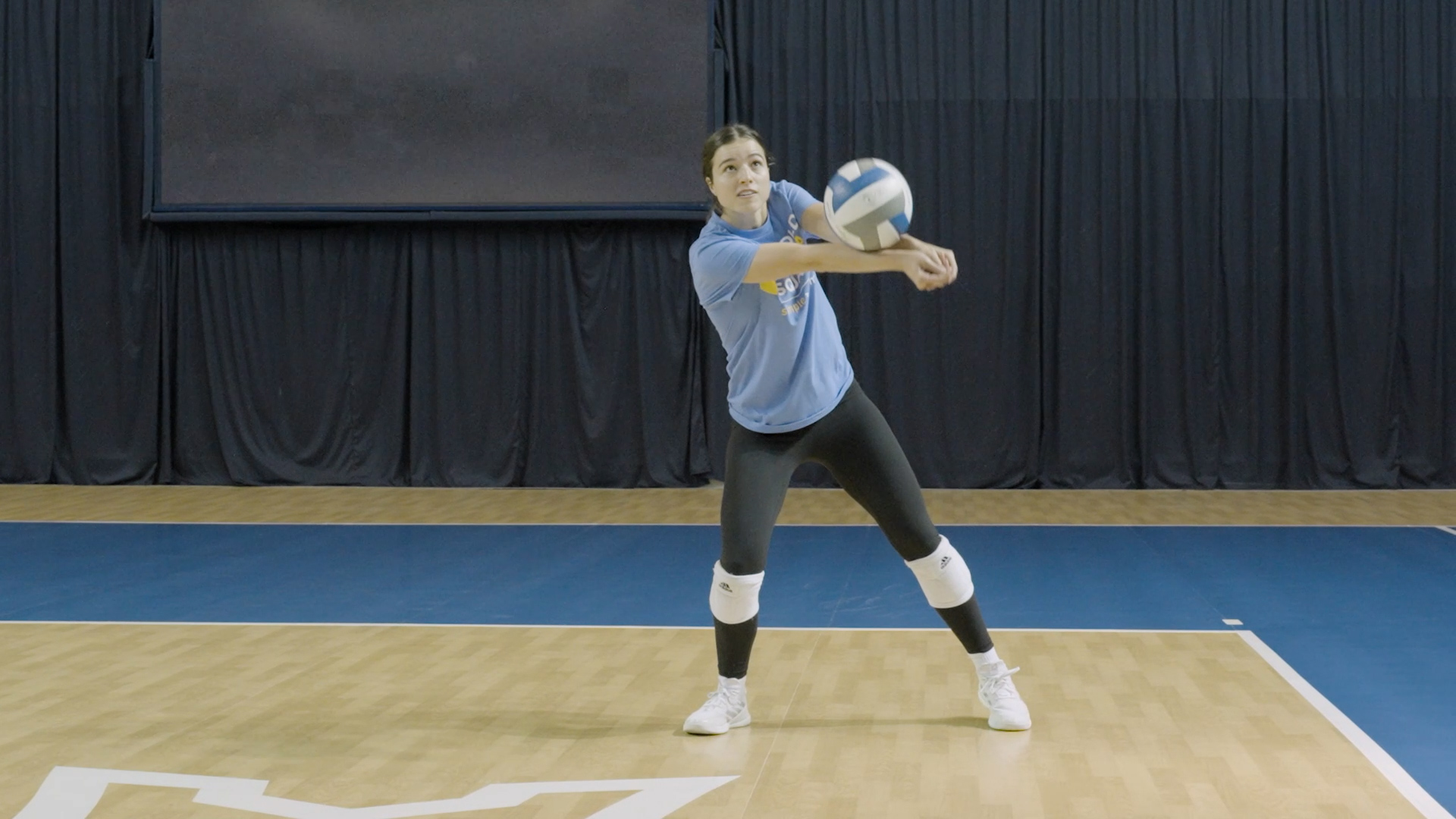After every big volleyball match, whether it be a college match or an NCAA tournament match or an Olympic match, the coaches of the winning team and losing team will inevitably tell a newspaper reporter, "The difference in this match was serving and passing."
In this article, we'll explain the most common type of volleyball pass - the forearm pass.
What is a forearm pass?
It's called a "forearm" pass because the athlete uses her forearms to pass the ball to the setter.
Below, watch Mary Lake pass a volleyball. Mary is a former NCAA All-American BYU women's volleyball player, former USA National Team member, and current LOVB Salt Lake libero.

Where exactly should the ball and forearms contact each other?
Ideally, we want the passer to contact the ball in the "sweet spot" or her forearms, which you can see in the image of Mary above. The sweet spot is the area between the passer's wrists and the passer's elbows. However, as University of Texas Associate Head Coach explains below, a passer might not always be able to contact the ball in the perfect sweet spot, but she can increase her odds of doing so by creating a straight and simple platform.
The above video is from a Gold Medal Squared coaching clinic. To see our upcoming clinics, please click here.
How often do forearm passes happen?
In the six matches of the 2024 NCAA Women's Final Four, featuring the Penn State Nittany Lions, Nebraska Cornhuskers, Louisville Cardinals, and Pitt Panthers, there were a total of 564 pass attempts by all players combined. Of those pass attempts, 96.5% were passed with forearms.

The eventual national champion, Penn State, passed the fewest percentage of balls with forearms, but of the 14 non-foreman passes by Penn State, 11 were by the same player. If you take that player out and look at the remaining primary passers for each team, the percentage of balls passed with forearms jumps to a staggering 98.6%.
What does this mean?
Volleyball coaches and players should understand not just the value of passing in the sport of volleyball, but more importantly the value of forearm passing in volleyball. When teaching this skill, coaches should emphasize the importance of using forearms to pass a ball, as opposed to other options that players might think are better.
Want to learn more about passing?
Check out our passing playlists and passing certification course on GMS+. Get started with a FREE GMS+ account by clicking here.




